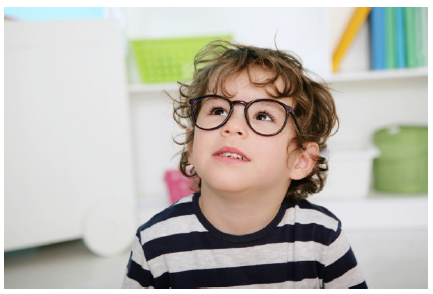What is Phonological Awareness?
Phonological Awareness refers to the sound structure of spoken language. It is a broad skill that includes being able to hear and play with smaller sounds in words. Phonological awareness includes identifying and manipulating sounds. It can include speaking rhyming words, clapping out the syllables in a word, or recognizing the initial sound of a word (Morris, 2012). Phonological awareness skills are an important predictor of later language and literacy development (NELP, 2010).
Children’s awareness of sound begins with whole words, and then they begin to understand the smaller units of sound, such as syllables, onset-rime and phonemes (Schickedanz & Collins, 2013).
Syllables are word parts or the largest sound units of spoken language. They are the uninterrupted segments of speech that are usually distinguished by the vowel sounds created when pronouncing a word.
Onset is the initial phonological unit of any word. Rime is the string of letters that follow the onset (not all words have a rime).
Phonemes are the individual sounds within each word.
Levels of Phonological Awareness
There are four main levels of phonological awareness. The first level is the word level. Children start to hear individual words within a sentence. The second level is the syllable level or the parts of the word. The third level is onset-rime and recognizing words that rhyme.

The fourth level is phonemes or individual sounds within each word. Phonemic awareness is the most difficult level and often acquired after the child is 5 years old.
Phonological awareness skills overlap, and therefore children do not need to master the first levels before they benefit from exposure to higher levels. In fact, it has been recommended that once syllables are introduced, the focus should move to the higher levels of phonological awareness.
At each level, children can learn to manipulate sounds in a number of different ways.
Blending — Combining sounds together
Segmenting — Breaking sounds apart
Deletion — Eliminating a sound
Substitution — Replacing with a different sound
Generate — Thinking of words with the same or similar sounds
Blending is the easiest skill for children to master. This skill is followed by segmenting, deletion, substitution and generating words.
Word Level
- Sentence segmentation — Hearing individual words within a sentence, “My name is Sarah.” Have the children hold up one finger for each word in the sentence.
- Blending — Blending smaller words to form a compound word. Tree + house = treehouse.
- Segmenting — Breaking a compound word into two smaller words. Treehouse = Tree + house.
- Deletion — Deleting one word from a compound word. “What is treehouse without the tree?” (house)
Syllable Level
- Blending — Blend syllables into whole words. “Blend these two syllables together ‘An’ + ‘gie’ = ‘Angie’.”
- Segmenting — Breaking words into syllables. “Clap the syllables in Angie’s name ‘An’ – ‘gie’.”
- Deletion — Delete a syllable from a word. “Say ‘Angie’ without the ‘gie’ = ‘An’.”
Onset-Rime Level
- Blending — Blend the onset with the rime to create a word. ‘C’ + ‘at’ = ‘cat’.
- Segmenting — Break the word into onset and rime. ‘Cat’ = ‘c’ + ‘at’.
- Recognize Rhymes — Rhyming words are words that sound the same in the middle and at the end. Do these words rhyme – ‘cat’ and ‘hat’?
- Create Rhymes — What words rhyme with ‘cat’?
- Alliteration — Words that have the same first constant or vowel sound – ‘Silly Sally sang seven songs’.
Phoneme Level
- Start by focusing on the initial sounds of words (such as child’s name).
- Isolation — What is the first sound in your name? ‘Peter’ = /p/.
- Identify — Which names have the same first sound? ‘Peter’, ‘Michael’ and ‘Pamela’.
- Blending — Blend sounds into words. ‘P’ + ‘e’ + ‘ter’ = ‘Peter’.
- Segmenting — Separate the sounds within a word. ‘Peter’ = ‘P’ + ‘e’ + ‘ter’.
Ideas to Try
Playfully use sounds throughout the day. Draw children’s attention to rhyming words, the initial sounds in words, and the number of syllables in words.
Use children’s names as you engage in word play. Discuss the sounds in each child’s name.
Use phonological awareness activities during transitions and small group time (for example, nursery rhymes and word games).
Say the correct phonological terms (such as rhyming, initial sound and syllables) during activities with children.
Read stories with predictable text (such as repeatable refrains) and rhyming words.
References
Consortium on Reaching Excellence in Education, Inc. (2012). Sound Beginnings: A workshop on early literacy. Instructors guide. Berkeley, CA: CORE.
Morrow, L. M. (2012). Literacy development in the early years. Boston, MA: Pearson Education.
Eunice Kennedy Shriver National Institute of Child Health and Human Development, NIH, DHHS. (2010). Developing Early Literacy: Report of the National Early Literacy Panel (NELP). Washington, DC: U.S. Government Printing Office.
Schickedanz, J. A. & Collins, M. F. (2013). So much more than the ABCs: The early phases of reading and writing. Washington, D.C.: NAEYC.
Byington, T.
2013,
Phonological Awareness,
Extension | University of Nevada, Reno, FS-14-07


